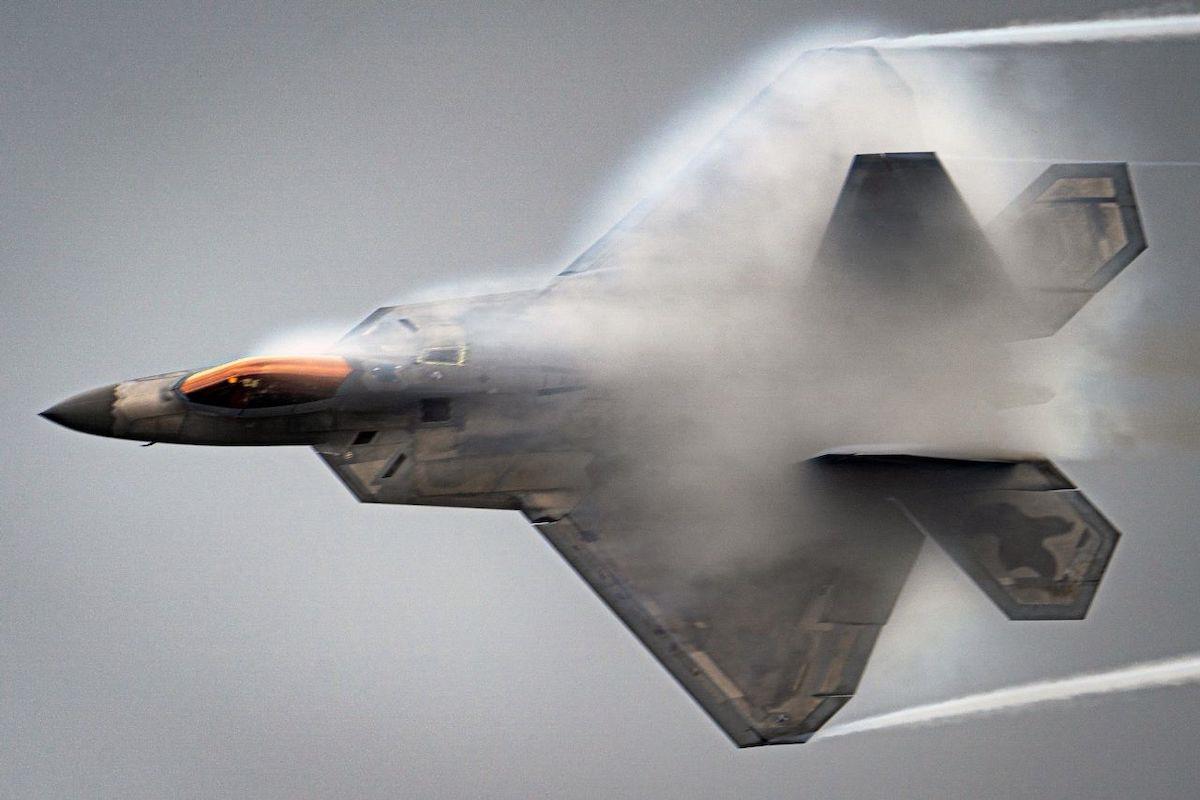(MENAFN- Asia Times) The US Air Force's F-22 Raptor may soon fly into the sunset as Next Generation Air Dominance (NGAD) fighter development gets up to speed.
this month, defense one reported that the US Air Force has just opened a competition to design its Next Generation Air Dominance (NGAD) 6th generation fighter, the first new US design in two decades scheduled to replace the stealth F-22.
While there is no agreed-upon definition of what makes a 6th generation fighter jet, the type may feature a modular design, optionally-manned capability, drone swarms, directed energy weapons, machine learning, AI and virtual and augmented reality.
Defense One cites a us air force statement saying the NGAD acquisition process“incorporates lessons learned from recent Air Force acquisition programs and will leverage open architecture standards.”
The statement also says the approach“will enable the government to maximize competition throughout the life cycle, provide a larger, more responsive industry base and drastically reduce maintenance and sustainment costs.”
The Defense One report states that the US Air Force solicitation release begins the NGAD selection process, with almost no details about the“engineering and manufacturing development contract,” aside from its winner is to be selected by 2024.
It also mentions that the actual solicitation sent to companies is classified to“protect operational and technological advantages,” as per the US Air Force statement. It does not include the drones that will fly alongside the future fighter.
Defense One notes that only two US aerospace firms are building fighter aircraft – Lockheed Martin and Boeing, with Northrop Grumman being a major supplier to both.
Michael Marrow notes in a march 2023 article for breaking defense that the US Air Force is planning to acquire 200 NGAD planes alongside 1,000 Collaborate Combat Aircraft (CCA), which are remotely-controlled targeting pods or weapons carried by current aircraft.
Marrow says that the NGAD will be prohibitively expensive while the CCAs will offer“affordable mass,” as one of the latter's design requirements is that they should cost just a fraction of the F-35.
Age, economics, obsolete technology and impractical upgrades have all influenced the US to gradually phase out the F-22 in favor of the NGAD.

The increasingly obsolete F-22 is headed for the graveyard in favor of the NGAD fighter. Image: Twitter
Aging F-22s are an issue, with the proposed retirement of older planes cutting into a small fleet. At the same time, increasingly expensive upgrade packages make an all-new aircraft more logical than keeping the late 1990s design in service.
John Tirpak notes in an april 2023 article for air & space forces magazine that the 33 older F-22 Block 20 planes the US Air Force aims to retire in its 2023 budget request are not competitive with the latest Chinese J-20 fighters.
He notes the fighters lack the most modern weapons and electronic warfare capabilities, and are less useful as trainers since they are so out of sync with the combat-coded F-22 Block 35s.
Alex Hollings notes in a november 2022 article for sandboxx the implications of the 2009 decision to stop F-22 production at just 186 planes, with its production lines cannibalized to make way for the newer F-35. Hollings also says the F-22's technology is becoming increasingly obsolete against evolving Chinese and other adversaries' air defenses.
in an april 2023 article for south china morning post (scmp) , Stephen Chen mentioned that Chinese researchers writing in the Modern Defense journal noted that the F-35 is a more significant threat than the F-22, owing to the latter's newer avionics and multirole capabilities.
Chen also notes that China has developed advanced counter-air weapons such as the HQ-9 missile system and J-20 fighter jets to blunt the US strategy of penetrating air defenses to attack high-value targets such as airfields and command and control centers.
Hollings notes that the F-22 lacks infrared search and track (IRST) capability, which is now being belatedly retrofitted to the jets. In addition, Thomas Newdick and Tyler Rogoway mention in a january 2022 article for the warzone that pre-production F-22s lacked IRST and side-looking airborne radar (SLAR) that the US removed from the design due to budget constraints during the plane's development.
An IRST sensor can detect and track heat signatures at a long range. It is a passive sensor that generates no signal emissions, giving fighter aircraft a“see first, shoot first” capability without compromising stealth. In addition, it minimizes the risk of electronic attack and jamming.
Newdick and Rogoway note that the F-22 doesn't have enough real estate to retrofit an IRST pod. They say that such an upgrade would distort the plane's carefully laid-out stealth shaping, while internally fitting IRST would involve significant rework on the F-22's internal systems, with IRST cooling systems taking up space for future upgrades.
Not to be outdone, China has also stepped up its development of 6th generation fighters. asia times reported in october 2022 that China is working on its rival to the US NGAD program, mirroring the same“system of system” the US uses.

China's J-20 fighters fly in formation at an air show. Image: China Daily
China sees 6th generation air dominance as featuring exponential increases in signature reduction, the exponential acceleration of processing power and sensing abilities, and the ability to iterate improvements using open systems architecture at the speed of relevance.
With that approach, China has closed the 6th generation fighter development gap with the US, with the US potentially getting the NGAD just a month ahead of China's version. However, that narrow gap may owe to China's concentrated focus and incremental approach to fighter development, which contrasts with the US' leapfrogging strategy.
This focus could result in the J-20 serving as the base for China's 6th generation fighter, to be incrementally upgraded with advanced, indigenous and evolving technologies.
Like this:Like Loading...

























Comments
No comment